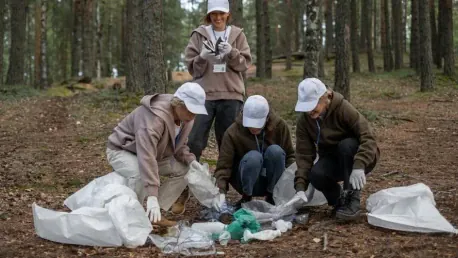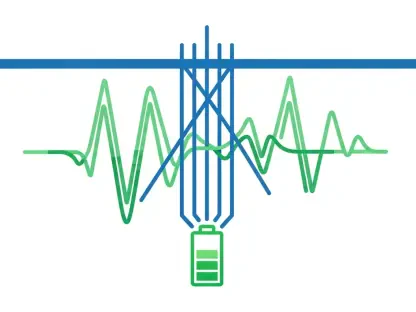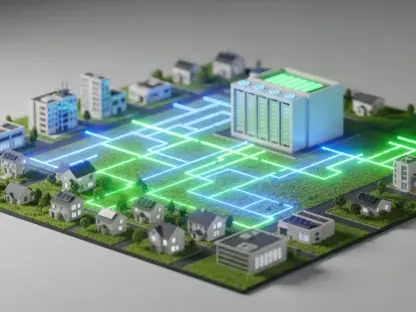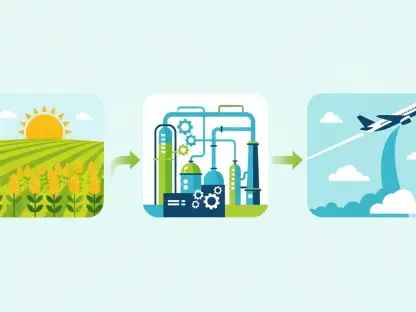Recent developments in the United States have seen a significant push towards promoting green initiatives, largely supported by government funding. These initiatives aim to enhance community resilience, encourage the adoption of renewable energy, and create sustainable job opportunities. This consolidation of governmental efforts reflects a nationwide movement towards sustainable development and combating climate change.
Federal Grants Empowering Renewable Energy Projects
Smart Manufacturing Lighthouse Program in Illinois
One significant highlight is the Smart Manufacturing Lighthouse Program (SMLP) in Illinois. With $2 million in federal funding from the U.S. Department of Energy, this program aims to equip small and medium-sized manufacturers with advanced smart manufacturing technologies. Governor JB Pritzker emphasized the importance of this funding in enhancing the state’s manufacturing sector, which is integral to Illinois’s economic strength. The SMLP, in collaboration with the Illinois Manufacturing Excellence Center (IMEC) and the Illinois Department of Commerce and Economic Opportunity (DCEO), seeks to provide resources, outreach, and technical support to local manufacturers, particularly those in underserved areas.
Additionally, this initiative is further supported by the Illinois Climate and Equitable Jobs Act (CEJA), which aims to reduce energy burdens on manufacturers and develop workforce skills. The program is expected to benefit at least 30 manufacturers, showcasing high-performance computing applications and best practices. By focusing on underserved communities, the SMLP ensures that advanced manufacturing technologies reach a broader range of businesses, thus fostering inclusive economic growth. The collaboration between state and federal entities exemplifies a proactive approach in leveraging technology for sustainable development, positioning Illinois as a leader in smart manufacturing.
Wisconsin’s Sustainable Practices
Similarly, Wisconsin has seen federal grants empowering local businesses to adopt sustainable practices. The U.S. Department of Agriculture allocated over $375,000 to two businesses in Wisconsin. Newcap, Inc. received $323,263 through the USDA’s Household Water and Well System grant to create a revolving loan program for homeowners in various counties, including tribal nations. Black’s Valley Ag Supply, Inc. received $51,855 to install solar panels, projected to save the company approximately $7,800 annually.
These projects highlight the USDA’s efforts to provide resource access to underserved communities through the Rural Partners Network. Julie Lassa, USDA Rural Development Wisconsin State Director, emphasized the significant impact of clean energy initiatives on sustainable rural development, with the USDA allocating over $27 million for renewable energy and related projects in the year. By facilitating resource access and encouraging the adoption of sustainable practices, these grants play a pivotal role in transforming rural economies, promoting environmental stewardship, and ensuring long-term viability for local businesses.
The Impact of the Inflation Reduction Act
Transforming Residential Energy Efficiency
The Inflation Reduction Act (IRA) has played a pivotal role in transforming residential energy efficiency across the country. Since its inception, over 3.4 million American families have received more than $8 billion in tax incentives and rebates for energy-saving improvements. Homeowners can qualify for up to $14,000 for making energy-efficient upgrades, such as installing solar panels and induction cooktops. Secretary of Energy Jennifer Granholm underscored the importance of these programs, noting that they present historic opportunities for residents to save on energy bills and reduce their carbon footprint.
The IRA not only facilitates significant savings for homeowners but also promotes clean energy technology, potentially helping to curb global temperatures’ rise. The act’s incentives have spurred a nationwide adoption of clean energy technologies, making energy-efficient upgrades more accessible. These initiatives are not only beneficial for individual households but also contribute to the broader goal of reducing greenhouse gas emissions. As more households adopt renewable energy solutions, the cumulative effect can lead to substantial reductions in national energy consumption and carbon emissions.
Promoting Clean Energy Technology
The act’s impact extends beyond immediate financial savings, fostering long-term environmental benefits. By making energy-efficient upgrades more accessible, the IRA supports the transition to a more sustainable energy infrastructure. This shift plays a crucial role in addressing broader environmental goals, including the reduction of greenhouse gas emissions and the mitigation of climate change impacts. The cumulative effect of widespread adoption of clean energy technologies accelerates progress towards a sustainable future, highlighting the importance of continued governmental support and innovative policy measures.
Educational Initiatives for Future Generations
Georgia Climate Action Project
The Georgia Climate Action Project, funded by the European Union and implemented by the environmental organization CENN, focuses on statewide engagement and targeted educational programs across various regions. The project established the first energy-efficient laboratory at Velistsikhe public school, featuring mini-models of solar panels and wind turbines. Project manager Giorgi Bokeria expressed the goal of creating an educational center for sustainable development, accessible to children from other schools within the municipality.
This initiative not only educates local youth but also aims to inspire future generations to adopt sustainable practices. By integrating sustainability into the curriculum, the project ensures that young people are aware of the importance of environmental conservation and the practical steps they can take to contribute. The hands-on experience provided by energy-efficient laboratories and interactive models helps students understand the real-world applications of renewable energy technologies. This early exposure to sustainable practices can foster a lifelong commitment to environmental stewardship, ensuring that the next generation is well-equipped to tackle future environmental challenges.
Inspiring Sustainable Practices
Educational programs like the Georgia Climate Action Project play a crucial role in shaping the mindset of future generations. By integrating sustainability into the curriculum, these initiatives ensure that young people are aware of the importance of environmental conservation and the practical steps they can take to contribute. The hands-on experience provided by energy-efficient laboratories and interactive models helps students understand the real-world applications of renewable energy technologies. This early exposure to sustainable practices can foster a lifelong commitment to environmental stewardship.
This initiative’s success demonstrates the potential of educational programs to cultivate an environmentally-conscious generation equipped to address climate challenges. As students gain a deeper understanding of sustainability’s significance, they are more likely to carry these lessons into adulthood, influencing communities and driving positive change. By investing in educational initiatives, governments and organizations can ensure that environmental awareness and sustainable practices become ingrained in societal values, paving the way for a more sustainable future.
Challenges and Future Prospects
Addressing Climate Impacts
Despite the promising progress, the article acknowledges the challenges that lie ahead. Experts warn of the urgency in addressing climate impacts such as landslides and floods, exacerbated by inefficient energy use. This emphasizes the importance of integrating green initiatives with broader climate resilience and sustainability discussions. The continued advancement of green initiatives requires a multi-faceted approach, addressing both immediate and long-term challenges to ensure effective climate mitigation and adaptation.
Additionally, collaboration between various stakeholders, including government agencies, private sector entities, and local communities, is essential to tackling these complex issues. By fostering partnerships and leveraging resources, society can develop comprehensive strategies that address the root causes of climate impacts while promoting sustainable development. The integration of green initiatives with broader climate resilience efforts underscores the need for cohesive policies and innovative solutions to safeguard the environment and the economy in the face of changing climate dynamics.
The Path Forward
Recent developments in the United States have seen a significant shift towards promoting green initiatives, underpinned largely by government support and funding. These green policies are designed to make communities more resilient against environmental changes, boost the adoption of renewable energy sources, and create new, sustainable job opportunities in the process. The focus on renewable energy includes investing in solar, wind, and other clean energies to reduce the reliance on fossil fuels, significantly cutting down the nation’s carbon footprint. Additionally, there are concerted efforts to upgrade infrastructure to be more eco-friendly, such as improving energy efficiency in buildings and expanding public transportation systems that produce fewer emissions.
This consolidation of governmental efforts embodies a broader, nationwide movement towards sustainable development and fighting climate change. The policies also aim to foster innovation in green technologies, supporting research and development to find new ways to address environmental challenges. Through these initiatives, the United States aspires to become a global leader in sustainability, setting an example for other nations to follow. The overall objective is to ensure a healthier planet for future generations, aligning economic growth with environmental responsibility.









